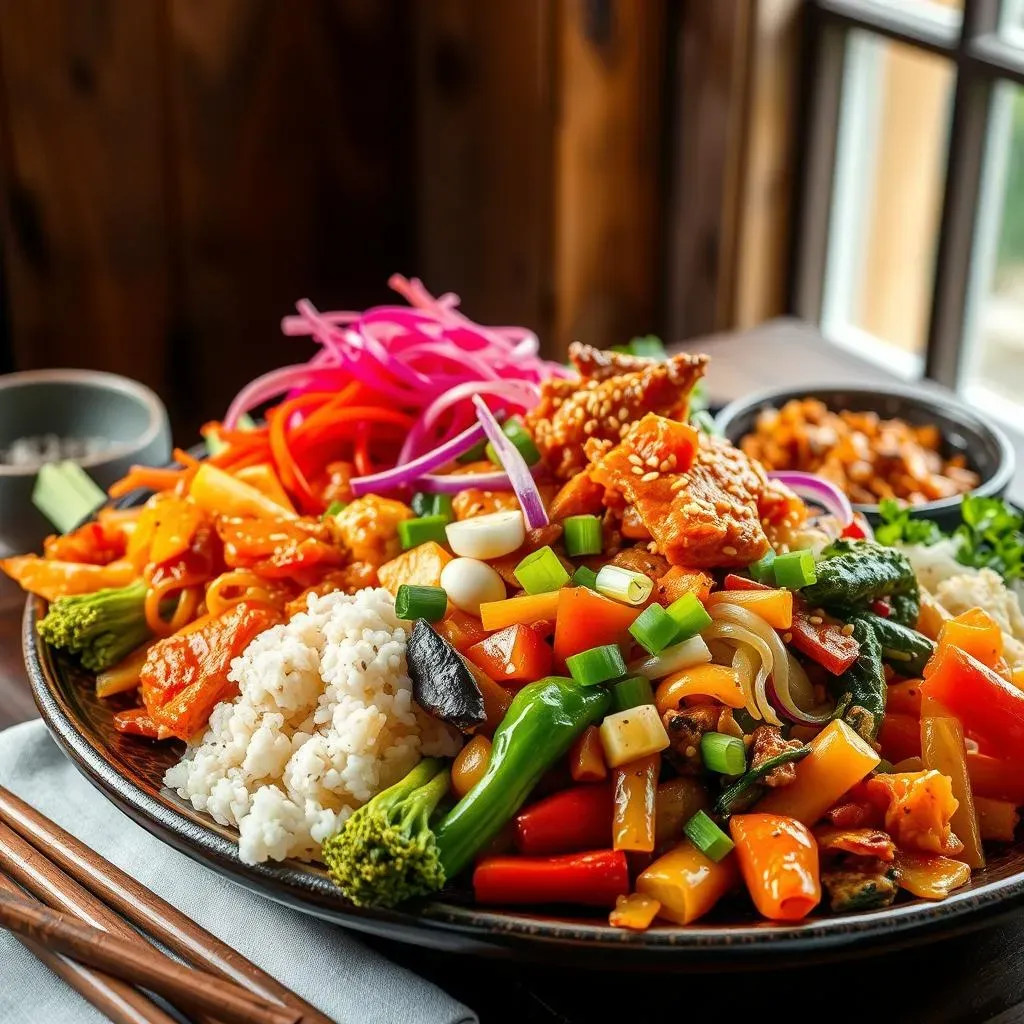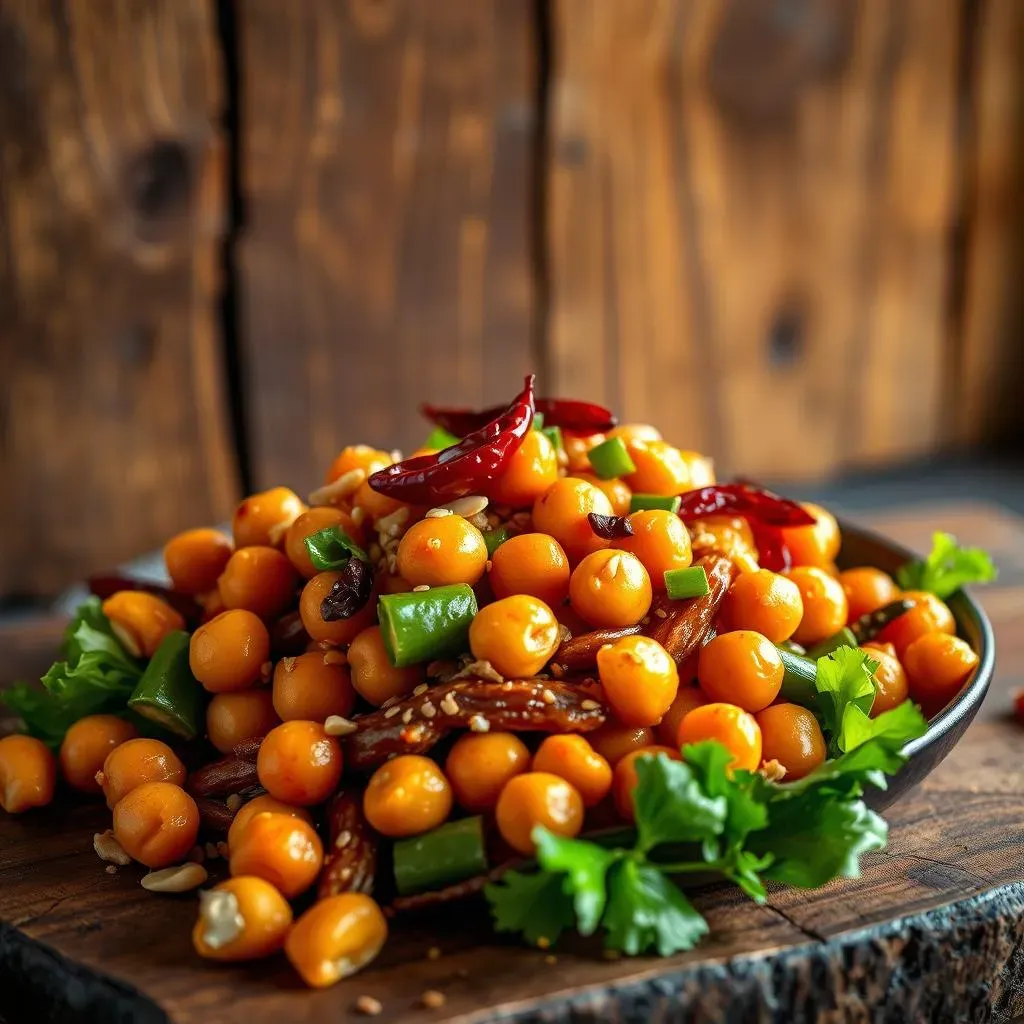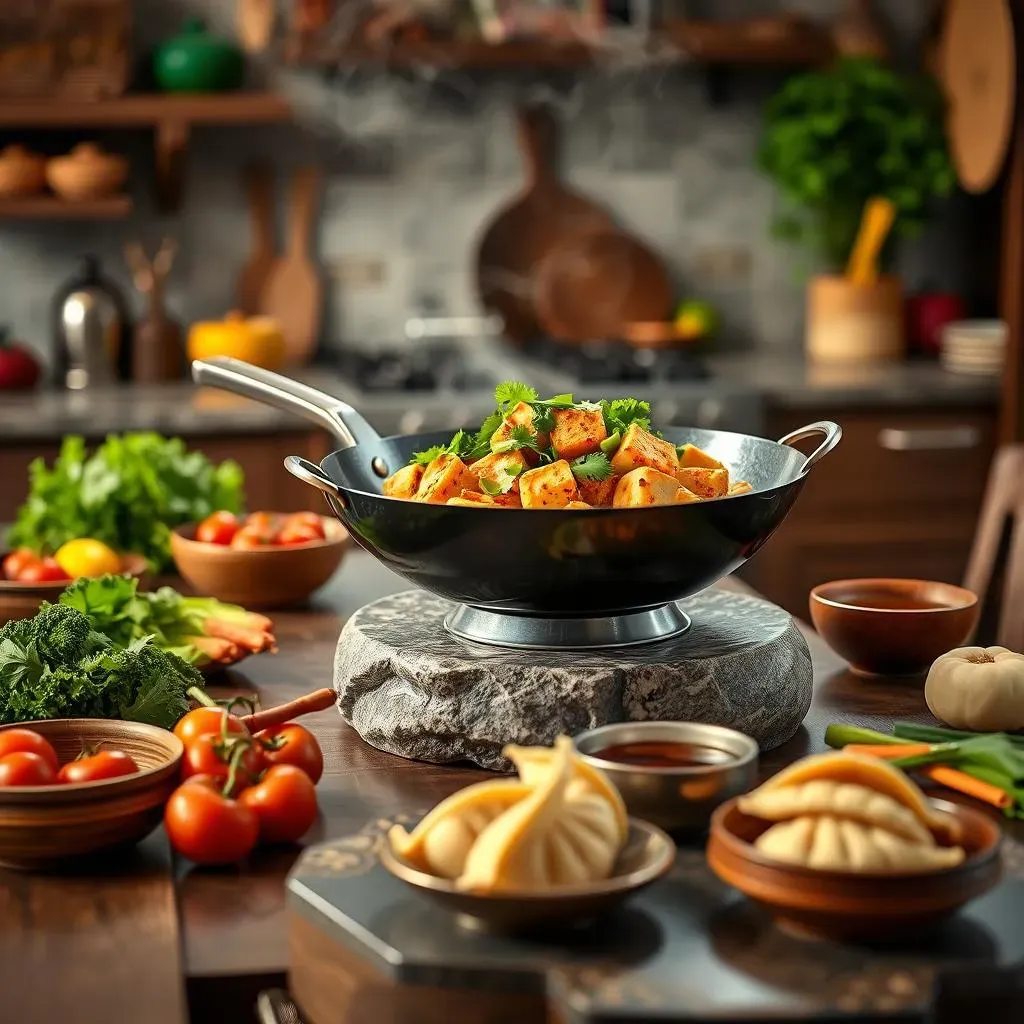Table of Contents
Ever feel like your taste buds are stuck in a rut? You love Chinese food, but maybe you're trying to eat less meat? Well, get ready to have your mind blown! The world of the "chinese food vegetarian menu" is vast, exciting, and packed with flavors that'll make you forget all about those takeout staples. We're not just talking about plain tofu and steamed veggies here. Think vibrant stir-fries, savory noodles, and dumplings bursting with fresh ingredients. This article is your passport to exploring this delicious cuisine, from understanding the key elements that make vegetarian Chinese dishes so special, to diving into some must-try recipes. Ready to take your taste buds on a journey? We'll guide you through the best of what's out there, with tips and tricks that'll make cooking these dishes at home a breeze. So, ditch the same old takeout and let's get cooking!
The Delicious World of Vegetarian Chinese Food
The Delicious World of Vegetarian Chinese Food
Beyond Tofu:
A World of Flavors
Okay, so you're thinking vegetarian Chinese food is all about bland tofu, right? Wrong! It's a vibrant, exciting cuisine that uses veggies in ways you wouldn't believe. We're talking about dishes that are packed with umami, the savory flavor that makes your mouth water, and textures that are anything but boring. Think about the crisp snap of water chestnuts, the silky smoothness of eggplant, or the satisfying chew of wood ear mushrooms. It's a whole new world of flavor combinations that will make even the most dedicated meat-eater do a double-take.
The secret? It's all in the sauces and the techniques. Fermented black beans add a deep, salty punch, while soy sauce gives you that classic Chinese flavor. And don't even get me started on the aromatics! Ginger, garlic, and scallions are the backbone of so many dishes, creating layers of flavor that are both comforting and complex. It's not just about throwing some vegetables in a pan; it's about creating a symphony of tastes that will keep you coming back for more.
Key Ingredient | Flavor Profile | Common Use |
|---|---|---|
Fermented Black Beans | Salty, Umami, Slightly Bitter | Stir-fries, Sauces |
Soy Sauce | Salty, Savory | Base for many sauces, Marinades |
Ginger | Spicy, Warm | Aromatic base, Stir-fries |
Garlic | Pungent, Sharp | Aromatic base, Stir-fries |
Scallions | Mild Onion, Fresh | Garnish, Flavor enhancer |
Regional Twists:
A Culinary Journey
Just like any other type of cuisine, Chinese vegetarian food isn't one-size-fits-all. Each region has its own unique take on things. In Sichuan, you'll find dishes that are fiery and numbing, thanks to the famous Sichuan peppercorns. Think mapo tofu, but with even more veggies! Head to the Cantonese region and you'll see a focus on fresh ingredients and delicate flavors, with dishes like stir-fried greens with garlic.
And let's not forget about the noodle dishes. From hand-pulled noodles in a rich broth to delicate rice noodles tossed in a light sauce, the variety is insane. You can find something for every craving. It's like traveling through China without ever leaving your kitchen, a real adventure for your taste buds! Exploring these regional differences is a great way to find your own favorite styles and dishes. It's like a treasure hunt, but with delicious food as the prize.
- Sichuan: Known for bold, spicy flavors and the use of Sichuan peppercorns.
- Cantonese: Focuses on fresh ingredients, delicate flavors, and stir-fried dishes.
- Northern China: Features wheat-based staples like noodles and dumplings.
- Southern China: Often uses rice as a base and has a strong focus on seafood, although vegetarian dishes are also popular.
MustTry Chinese Vegetarian Dishes: A Flavor Adventure
MustTry Chinese Vegetarian Dishes: A Flavor Adventure
Kung Pao Chickpeas:
A Spicy Kick
Alright, let's talk about Kung Pao Chickpeas, this isn't your average chickpea dish. It's a flavor explosion! Imagine crispy chickpeas coated in a sweet, savory, and spicy sauce, with crunchy peanuts and a little bit of heat from dried chilies. It's got that perfect balance of textures and tastes that make you want to keep eating more. I've had this dish at a few different places, and each time, it's been a little different, but always amazing. It's like a dance party in your mouth, and the chickpeas are the star of the show.
The key to a good Kung Pao is the sauce, it's a mix of soy sauce, vinegar, sugar, and a touch of chili oil that creates a complex and addictive flavor profile. Don't be shy with the peanuts, they add a great crunch, and if you are feeling adventurous, add some Sichuan peppercorns to bring that unique numbing sensation. This dish proves that vegetarian food can be just as bold and exciting as any meat dish. It's a perfect example of how Chinese cuisine uses simple ingredients to create something truly special.
Ingredient | Flavor Contribution |
|---|---|
Chickpeas | Hearty, Nutty |
Soy Sauce | Salty, Umami |
Vinegar | Tangy |
Sugar | Sweet |
Chili Oil | Spicy |
Peanuts | Crunchy, Nutty |
Vegetable Lo Mein:
Noodles of Joy
Next up, we have Vegetable Lo Mein. This dish is like a warm hug on a plate. It's all about those perfectly cooked noodles, tossed with a mix of colorful veggies and a savory sauce. You can use whatever veggies you like, from broccoli and carrots to bell peppers and mushrooms. The beauty of Lo Mein is that you can customize it to your own tastes. It's a great way to use up any leftover vegetables you have in the fridge.
The key is in the wok skills, you want to make sure the noodles are cooked al dente, and the veggies are stir-fried to perfection, still a little bit crisp. A good lo mein sauce is a mix of soy sauce, oyster sauce, and a touch of sesame oil, which adds a nutty aroma. This dish is great for a quick weeknight meal, or a cozy night in. It's simple, satisfying, and always hits the spot. Trust me, once you master Lo Mein, it will become a staple in your kitchen.
"The best meals are the ones that bring people together, and a good plate of noodles can do just that." - My grandma, who was a big fan of noodles.
Easy Chinese Vegetarian Recipes for Your Kitchen
Easy Chinese Vegetarian Recipes for Your Kitchen
Quick Tofu Stir-Fry:
Weeknight Winner
Okay, so you want to make some awesome Chinese vegetarian food, but you don't have all day? I get it! Let's start with a super easy Tofu Stir-Fry. This is my go-to when I need something fast, healthy, and flavorful. The best part? You can use whatever veggies you have on hand. Think broccoli, bell peppers, carrots, snap peas – seriously, anything goes. And the sauce? It's just a mix of soy sauce, a touch of ginger, garlic, and maybe a little bit of sesame oil.
The secret to a good stir-fry is to get your wok nice and hot. That way, the veggies cook quickly and stay crisp. I like to press my tofu before I cook it to get rid of any extra water, this helps it get nice and golden brown. Toss everything together with your sauce and you're done! It's a meal that's ready in minutes, and it's way better than any takeout. Plus, it's a great way to get your daily dose of veggies.
Ingredient | Why It's Great |
|---|---|
Tofu | Protein-packed, absorbs flavors |
Soy Sauce | Savory base |
Ginger | Adds warmth and spice |
Garlic | Aromatic flavor |
Sesame Oil | Nutty aroma |
Simple Vegetable Dumplings:
Fun and Flavorful
Now, if you are feeling a little bit more adventurous, let's try some vegetable dumplings. Don't worry, it's not as hard as it sounds. You can use pre-made dumpling wrappers to save time, or if you are a pro, try making your own. For the filling, I like a mix of finely chopped cabbage, carrots, shiitake mushrooms, and some scallions. A little bit of soy sauce and ginger bring it all together.
Once you have your filling ready, it's time to assemble the dumplings. You can pleat them, or just fold them in half like a taco. Then, you can steam them, pan-fry them, or even boil them. Serve them with a dipping sauce of soy sauce, vinegar, and a touch of chili oil. Dumplings are fun to make, and even more fun to eat. They're perfect for a weekend cooking project, or a fun get-together with friends.
"Cooking is like a love letter, written with ingredients." - A wise chef I met once.